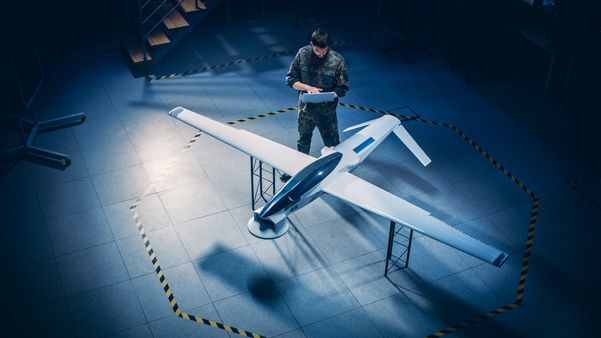Textron (TXT +2.34%) released solid first-quarter 2019 results early Wednesday, highlighting an expected revenue decline as growth from its core aviation products was more than offset by declines at its remaining segments. But the defense and aerospace conglomerate also delivered better-than-anticipated earnings thanks to both generous capital returns and its continued focus on operational improvement, including notable progress from its recently restructured specialized-vehicle business.
Shares initially climbed as much as 11% this morning as the market reacted to the news, then settled to close up around 4%. Let's take a closer look at how Textron started the year.

IMAGE SOURCE: ARCTIC CAT/TEXTRON.
Textron's results: The raw numbers
| Metric | Q1 2019 | Q1 2018 | Year-Over-Year Change (Decline) |
|---|---|---|---|
|
Revenue |
$3.109 billion |
$3.296 billion |
(5.7%) |
|
GAAP net income |
$179 million |
$189 million |
(5.3%) |
|
GAAP earnings per share |
$0.76 |
$0.72 |
5.6% |
Data source: Textron quarterly filings. GAAP = generally accepted accounting principles.
What happened with Textron this quarter?
- Textron's earnings per share were bolstered by stock buybacks over the past year, including $202 million repurchased in the first quarter alone.
- Textron doesn't provide specific quarterly guidance. So for perspective -- and though we don't usually pay close attention to Wall Street's demands -- most analysts were modeling earnings of just $0.68 per share on slightly higher revenue of $3.17 billion.
- By segment:
- Textron aviation revenue grew 12% to $1.134 billion, driven by higher volume and favorable pricing mix across both jets and commercial turboprops. Aviation delivered 44 jets and 44 commercial turboprops this quarter, up from 36 and 29 units, respectively, in the same year-ago period. Segment backlog increased $204 million sequentially to $2.0 billion. Segment profit grew 47.2% to $106 million, driven by higher volumes and operating leverage.
- Bell revenue declined 2% to $739 million, due to lower commercial helicopter deliveries of 30 units this quarter (down from 46 a year ago). Segment backlog grew $459 million sequentially to $6.3 billion. Segment profit grew 19.5% to $104 million, driven by operational improvements.
- Textron systems revenue declined 20.8% year over year to $307 million, due to lower Tactical Armoured Patrol Vehicle (TAPV) deliveries and lower unmanned systems volume. Segment backlog declined $62 million sequentially to $1.4 billion. Segment profit declined 44% to $28 million.
- Industrial revenue fell 19.4% year over year to $912 million, primarily driven by the divestment of the Tools & Test product line last year. Segment profit dropped 22% to $50 million, as the impact of the divestment was partially offset by favorable performance related to cost reductions and manufacturing realignment actions within the Specialized Vehicle product line.
- Finance segment revenue grew $1 million, to $17 million, and profit climbed slightly to $294,000.
What management had to say
"Our results in the quarter were driven by growth and performance at Aviation and continued strong execution at Bell, which resulted in significant margin improvements at those segments," stated Textron chairman and CEO Scott Donnelly. "The company remains on track for a strong 2019 as we continue our focus on operational improvement and earnings growth."
Looking forward
More specifically, Textron reaffirmed its outlook for full-year 2019 earnings per share from continuing operations of $3.55 to $3.75, and for cash flow from continuing operations of the manufacturing group (before pension contributions) of $700 million to $800 million. Of note: Textron did not specifically update its top-line guidance. So for perspective, the company previously told investors to expect 2019 consolidated revenue to be approximately flat from $2018 at around $14 billion.
All things considered, this was as strong a quarter as any Textron shareholder could have hoped for. From the continued outperformance in the aviation segment to operational improvements across previously troublesome areas of the business, Textron effectively sustained the positive momentum we saw begin to materialize at the end of last year. And its stock price is understandably climbing as a result.






